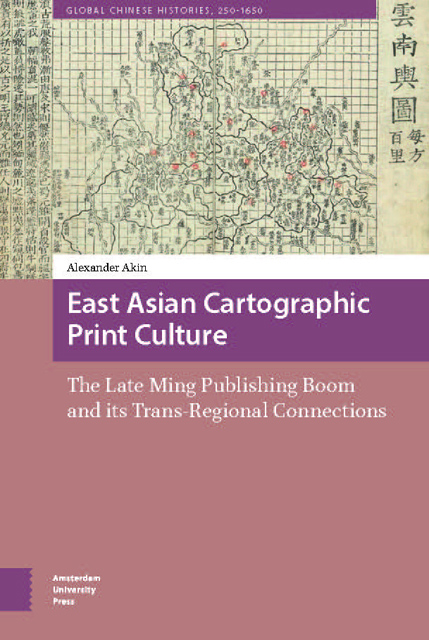 East Asian Cartographic Print Culture
East Asian Cartographic Print Culture Published online by Cambridge University Press: 12 January 2023
Abstract
This chapter examines the role of influential Ming texts such as the Sancai tuhui (Illustrated Compendium of the Three Fields of Knowledge) and the Huang Ming zhifang ditu (Administrative Atlas of the Imperial Ming) in Japan, even in the context of Japan’s comparatively direct contact with the cartographic traditions of the Dutch, the Portuguese, and other European lands. The role of Jesuit cartography and the long-lasting influence of Buddhist cosmology are considered within this trans-regional context.
Keywords: Ming, Japan, Jesuit cartography, Ishō Nihon den, Nansenbushū bankoku shōka no zu, Wa-Kan sansai zue
There was significant cartographic influence in Chosŏn Korea from the earlier Ming period, but very little reflection of the explosion of diversity that took place later in the Ming dynasty or the addition of European materials to the existing repertoire. Japan, also linked to the networks of East Asian textual circulation, offers a host of contrasts in its intersections with late Ming publications as well as Western cartography.
While Japan had much looser political relations with the Ming than did Chosŏn, it engaged in a significant amount of both officially authorized and private trade. Products of the late Ming publishing boom reached Japanese hands in processes that have been chronicled by authors such as Ōba Osamu and Peter Kornicki. In the early decades of the Tokugawa, Japanese readers were fully aware that their islands had been the subject of writings on the continent, and there were readers who were keen to peruse these accounts. Scholars like Matsushita Kenrin gathered together texts and maps produced under various Chinese and Korean dynasties, reproducing and critically evaluating them for a local audience. Imported Ming works also played a significant role in shaping the direction of cartography in Japan, serving as direct inspiration for the geographical content and organization of certain encyclopedias and other popular works. Even after a series of bans on Christianity and European works came into force during the 1630s, discussion of the earth’s sphericity and the ‘Five continents theory’ introduced from Europe continued in Japan, not only because Japanese authorities treated maps differently from other categories of Western texts, but also because syncretic Ming works that had assimilated Jesuit writings introduced such ideas completely shorn of Christian content.
To save this book to your Kindle, first ensure no-reply@cambridge.org is added to your Approved Personal Document E-mail List under your Personal Document Settings on the Manage Your Content and Devices page of your Amazon account. Then enter the ‘name’ part of your Kindle email address below. Find out more about saving to your Kindle.
Note you can select to save to either the @free.kindle.com or @kindle.com variations. ‘@free.kindle.com’ emails are free but can only be saved to your device when it is connected to wi-fi. ‘@kindle.com’ emails can be delivered even when you are not connected to wi-fi, but note that service fees apply.
Find out more about the Kindle Personal Document Service.
To save content items to your account, please confirm that you agree to abide by our usage policies. If this is the first time you use this feature, you will be asked to authorise Cambridge Core to connect with your account. Find out more about saving content to Dropbox.
To save content items to your account, please confirm that you agree to abide by our usage policies. If this is the first time you use this feature, you will be asked to authorise Cambridge Core to connect with your account. Find out more about saving content to Google Drive.